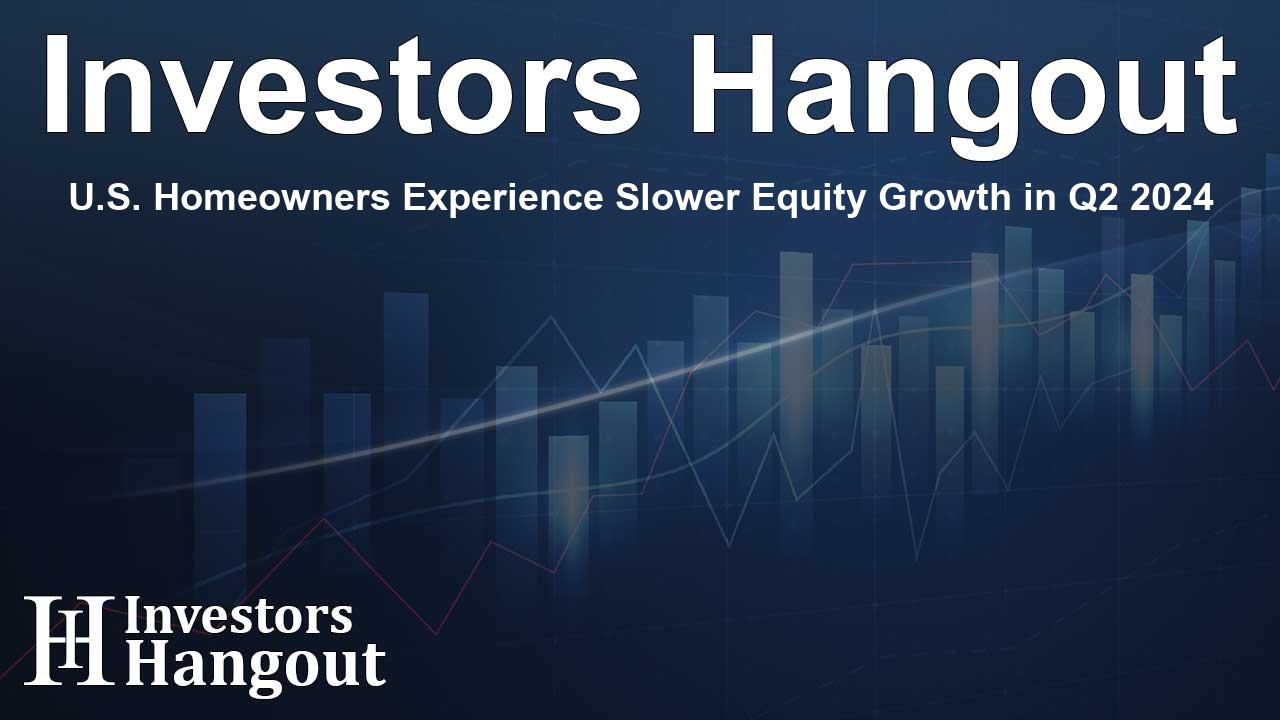U.S. Homeowners Experience Slower Equity Growth in Q2 2024

Homeowners Continue to See Equity Gains
In recent financial discussions, it has become increasingly apparent that U.S. homeowners are witnessing a steady rise in their home equity. According to findings released by CoreLogic, homeowners with mortgages—a group that consists of about 62% of residential properties—have enjoyed an equity increase of 8.0% over the past year. This figure translates to a remarkable cumulative gain of $1.3 trillion, which equates to an average of $25,000 per borrower. In total, U.S. homeowner equity has now surpassed the impressive threshold of $17.6 trillion in the second quarter of 2024.
Regional Variations in Equity Gains
Notably, states in the Northeast showcased the most significant annual home price growth during this period, contributing to enhanced equity levels. Maine topped the statistics with the highest average national equity gain of $57,500. Following closely were California and New Jersey, with gains of $55,300 and $52,600, respectively. Interestingly, not all states experienced this upward trend; Texas, Oklahoma, and North Dakota reported annual equity losses of $2,600, $7,700, and $8,400, respectively.
The Role of Home Equity in Economic Stability
As Dr. Selma Hepp, CoreLogic's Chief Economist, highlights, the continuous growth in home prices has fortified the equity of present homeowners, with the average homeowner now holding approximately $315,000 in equity—almost $129,000 more than at the beginning of the pandemic. This accumulation serves as a financial buffer against various economic uncertainties, particularly as some homeowners grapple with increasing insurance and tax costs. Many have had to tap into their equity to navigate these challenges, while mortgage delinquency rates remain notably low—a reassuring statistic amidst rising inflation and other economic pressures.
Understanding Negative Equity
Negative equity, often called underwater or upside-down mortgages, refers to situations where borrowers owe more on their mortgages than their properties are worth. Fortunately, recent trends indicate a decrease in negative equity cases nationwide. In cities like Las Vegas and Los Angeles, negative equity shares among all mortgages are impressively low at 0.6% and 0.7%, respectively.
Equity Trends in the Housing Market
In terms of changes, the total amount of mortgaged homes in negative equity decreased by 4.2% from the second quarter of 2023 to the same quarter in 2024, equating to about 1 million homes or 1.7% of mortgaged properties. Comparatively, annual statistics reveal a decrease of 15%, with 1.1 million homes accounting for 2.0% of all mortgaged properties finding themselves in negative equity.
Future Projections for Home Equity
Home equity is inherently influenced by the fluctuations in home prices. Homeowners currently in positions where equity is near the negative cutoff (+/- 5%) could face changes depending on the market. For instance, should home prices rise by 5%, approximately 105,000 homes would regain equity, whereas a 5% decline could lead to 139,000 properties falling underwater. The CoreLogic Home Price Index Forecast projects a further increase in home prices of 2.3% from June 2024 to June 2025.
Looking Ahead to CoreLogic's Next Report
The upcoming release for the CoreLogic Homeowner Equity Report is anticipated in December 2024, which will include updated data for the third quarter of 2024. CoreLogic continues to analyze trends and provide valuable insights for stakeholders in the housing market.
CoreLogic's Methodology
CoreLogic’s methodology for determining property equity compares the estimated current value of a property against its mortgage debt outstanding (MDO). When the MDO exceeds the estimated value, this indicates negative equity. CoreLogic sources its data primarily from public records, ensuring a comprehensive view of the residential property landscape across the U.S. Minor gaps exist in certain jurisdictions, accounting for less than 5% of the total U.S. population.
Frequently Asked Questions
What is the main finding of CoreLogic's recent report?
CoreLogic's report indicates that U.S. homeowners with mortgages experienced an 8.0% increase in home equity over the past year.
Which states saw the largest gains in home equity?
Maine led with an average gain of $57,500, followed by California and New Jersey.
How has the equity situation changed for negative equity borrowers?
The number of homes in negative equity decreased by 4.2% from Q2 2023 to Q2 2024, reflecting a positive trend.
What financial impact does home equity provide to homeowners?
Home equity serves as a financial buffer, allowing homeowners to manage costs related to insurance and taxes without falling behind on mortgages.
When will the next CoreLogic Homeowner Equity Report come out?
The next report is scheduled for release in December 2024, providing insights for Q3 2024.
About Investors Hangout
Investors Hangout is a leading online stock forum for financial discussion and learning, offering a wide range of free tools and resources. It draws in traders of all levels, who exchange market knowledge, investigate trading tactics, and keep an eye on industry developments in real time. Featuring financial articles, stock message boards, quotes, charts, company profiles, and live news updates. Through cooperative learning and a wealth of informational resources, it helps users from novices creating their first portfolios to experts honing their techniques. Join Investors Hangout today: https://investorshangout.com/
Disclaimer: The content of this article is solely for general informational purposes only; it does not represent legal, financial, or investment advice. Investors Hangout does not offer financial advice; the author is not a licensed financial advisor. Consult a qualified advisor before making any financial or investment decisions based on this article. The author's interpretation of publicly available data shapes the opinions presented here; as a result, they should not be taken as advice to purchase, sell, or hold any securities mentioned or any other investments. The author does not guarantee the accuracy, completeness, or timeliness of any material, providing it "as is." Information and market conditions may change; past performance is not indicative of future outcomes. If any of the material offered here is inaccurate, please contact us for corrections.